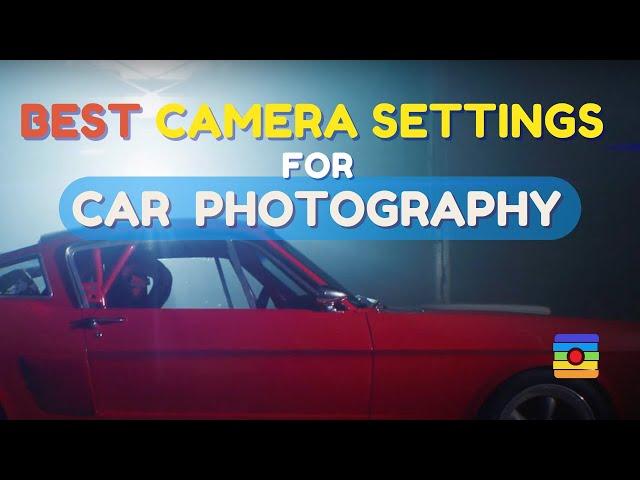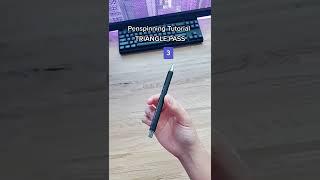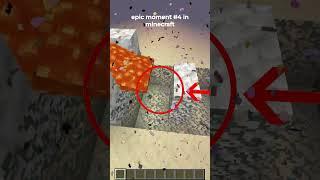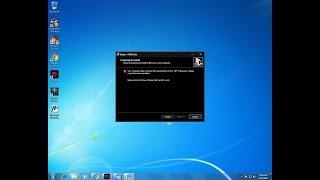
Best Camera Settings for Car Photography by B&C Camera
B&C Camera - Subscribe to our channel :) One of the best things about photography is that it’s a vehicle (pun intended) for many different worlds to collide. A person interested in photography might not necessarily be interested in cars, or vice versa. However, through photography, these two distinct passions can come together, igniting your curiosity and educating you in whichever aspect you lack the most know-how. Whether you’re behind the lens or behind the wheel.
For many people, photographing cars is a fun and challenging hobby, but it’s a dream job for others. In this blog, we’ll examine some of the best camera settings that will help you shoot like a pro.
First, let’s break it into two categories: parked and driving, or how we’d say it in photo jargon: static and in-motion.
Static
Generally speaking, when taking photos of a static car, the first thing to think about is a depth of field. Do you want a shallower DoF (f/4 and lower), making the car the only sharp object in the picture, or do you want to include the setting where the vehicle is parked? If the latter is the case, you’ll want to increase the aperture to f/8 or higher.
Because a car is much longer and broader than, say, a person, you’ll typically have to be using a wide-angle lens or standing a healthy distance away to get the entire car in the shot. Because of the nature of depth of field, even if you’re shooting at an f/2.8, your DoF will automatically deepen because you’re further away from the object.
This means that unless you’re isolating a single detail of the car in your shot, the background will probably be a part of your image. You just have to decide if it’s an aspect of the story you’re telling and if you want your settings to accommodate it as much as the car itself.
More general settings include a low ISO and a faster shutter speed -- to ensure sharpness and detail. This will become simpler if you compensate for the slight loss of a fast shutter with a wider aperture.
If you are only focusing on a unique detail of the car, a shallower depth of field (f/2.8 or lower) is usually the way to go. The short zone of focus will make a decal, rim, or mirror the total focus of your picture and give you that creamy, optically satisfying blur familiar in portraits.
In-Motion
Driving cars tend to be a whole other ballgame in terms of difficulty, but vehicles are meant to move (and move fast!). You’re going to want to get a few shots of your brand new ride or restored classic in its proper state of motion.
Use a much faster shutter speed -- 1/125 or quicker, depending on your light availability. If you’re shooting in the bright daylight, crank that speed up for increased detail and less motion blur. Also, pan the camera side to side, essentially following the motion of the car. If the shutter speed is fast enough, it will compensate for the movement of the vehicle and the direction of your arms as you try to catch the speeding bullet in time.
You’ll need to hone your instincts and timing for the panning technique, but it will be well worth the effort. Consider investing in a monopod as additional support for your pans. You’ll be able to lock your camera into a fluid head and pan smoothly with the connected arm, following motion and action with ease.
A Quick Word on Lighting
Because cars have a shiny paint-job to accentuate their stealthy design, it can be challenging to photograph them without getting glare, reflections, and unsavory “hot-spots” from lights. Daytime/outdoor shooting can be very helpful in getting natural and even light, but if you’re shooting in a studio or garage, or you’re adding your own external light, consider using as powerful of lights as you can find. More power equals a greater distance from the subject, reducing reflection. Also, use heavy diffusion, allowing a smoother, wider throw of illumination, eliminating those pesky points of light that will ricochet off a racing stripe like a laser.
Lastly, upload your shots into editing software as the final piece of the puzzle. When attempting to capture a fast-moving object, the effort in the field isn’t always flawless. Use this software to recompose your shot, crop, edit, embolden, re-color, sort, and even adjust the focus of your photograph.
With these tips and a little practice, you’ll be able to catch cars from the family van to a Formula 1 racer, all with the click of a shutter button.
For many people, photographing cars is a fun and challenging hobby, but it’s a dream job for others. In this blog, we’ll examine some of the best camera settings that will help you shoot like a pro.
First, let’s break it into two categories: parked and driving, or how we’d say it in photo jargon: static and in-motion.
Static
Generally speaking, when taking photos of a static car, the first thing to think about is a depth of field. Do you want a shallower DoF (f/4 and lower), making the car the only sharp object in the picture, or do you want to include the setting where the vehicle is parked? If the latter is the case, you’ll want to increase the aperture to f/8 or higher.
Because a car is much longer and broader than, say, a person, you’ll typically have to be using a wide-angle lens or standing a healthy distance away to get the entire car in the shot. Because of the nature of depth of field, even if you’re shooting at an f/2.8, your DoF will automatically deepen because you’re further away from the object.
This means that unless you’re isolating a single detail of the car in your shot, the background will probably be a part of your image. You just have to decide if it’s an aspect of the story you’re telling and if you want your settings to accommodate it as much as the car itself.
More general settings include a low ISO and a faster shutter speed -- to ensure sharpness and detail. This will become simpler if you compensate for the slight loss of a fast shutter with a wider aperture.
If you are only focusing on a unique detail of the car, a shallower depth of field (f/2.8 or lower) is usually the way to go. The short zone of focus will make a decal, rim, or mirror the total focus of your picture and give you that creamy, optically satisfying blur familiar in portraits.
In-Motion
Driving cars tend to be a whole other ballgame in terms of difficulty, but vehicles are meant to move (and move fast!). You’re going to want to get a few shots of your brand new ride or restored classic in its proper state of motion.
Use a much faster shutter speed -- 1/125 or quicker, depending on your light availability. If you’re shooting in the bright daylight, crank that speed up for increased detail and less motion blur. Also, pan the camera side to side, essentially following the motion of the car. If the shutter speed is fast enough, it will compensate for the movement of the vehicle and the direction of your arms as you try to catch the speeding bullet in time.
You’ll need to hone your instincts and timing for the panning technique, but it will be well worth the effort. Consider investing in a monopod as additional support for your pans. You’ll be able to lock your camera into a fluid head and pan smoothly with the connected arm, following motion and action with ease.
A Quick Word on Lighting
Because cars have a shiny paint-job to accentuate their stealthy design, it can be challenging to photograph them without getting glare, reflections, and unsavory “hot-spots” from lights. Daytime/outdoor shooting can be very helpful in getting natural and even light, but if you’re shooting in a studio or garage, or you’re adding your own external light, consider using as powerful of lights as you can find. More power equals a greater distance from the subject, reducing reflection. Also, use heavy diffusion, allowing a smoother, wider throw of illumination, eliminating those pesky points of light that will ricochet off a racing stripe like a laser.
Lastly, upload your shots into editing software as the final piece of the puzzle. When attempting to capture a fast-moving object, the effort in the field isn’t always flawless. Use this software to recompose your shot, crop, edit, embolden, re-color, sort, and even adjust the focus of your photograph.
With these tips and a little practice, you’ll be able to catch cars from the family van to a Formula 1 racer, all with the click of a shutter button.
Тэги:
#Best_Camera_Settings_for_Car_Photography #best_settings_for_car_photography #car_photography #photography #photographing_cars #how_to_photograph_cars #best_settings_for_car_photos #car_photos #car_photo #photography_and_cars #how_to_shoot_cars #car_photography_for_beginners #photography_class #photography_lesson #photo_class #photo_lesson #car_photographer #vehicle_photography #how_to_photograph_vehicles #car_photography_settings #best_lens_for_car_photography #b&c_cameraКомментарии:
История серии: Street Fighter #4
[NAGIB_PRO] NG
Время - от солнечных до атомных часов | Владимир Сурдин
Лекции для крепкого сна
epic moment 4 in minecraft
UltraLio
Easiest Way To Fix All Problems In PUBG PC LITE
XHIRO CHANNEL


























